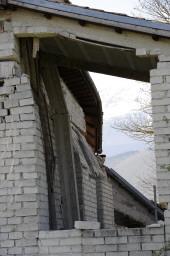The intensity of the earthquake which rocked the central Italian region of Abruzzo was determined by the fact that the movement in the fault which caused it was relatively superficial, according to a leading Japanese expert.
''I have analysed seismic waves recorded the world over and the intensity of the April 6 earthquake in Italy would appear to be caused by the fact that the movement in the fault took place only one or two kilometers below ground,'' observed Yashiko Yamanaka, an expert in seismology and professor at Japan's Nagoya University.
The fault line, the expert told Japanese TV, ''is about 10km wide and 20km wide and the earthquake took place when it moved from north to south and the western side of the shelf dropped some 60cm in a period of ten seconds''.
Yamanaka made his remarks on a program on which a number of other experts gave their opinions on what took place in Italy with special attention paid to the quality of construction in relatively new buildings.
Japan is in the front line in developing anti-seismic building techniques, given that it, like Italy, is subject to frequent earthquakes.
Looking at footage sent from the disaster area, one expert, a University of Tokyo professor, said the pillars used as foundations appeared to be ''too skinny'' and classic solid bricks were used in the main walls rather than modern ones which are more similar to 'Lego' blocks which are interconnected and can withstand the sway of walls during a tremor.





